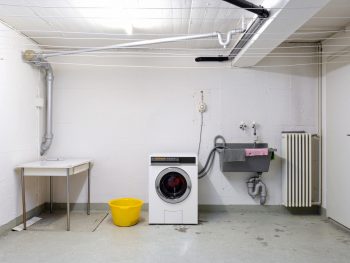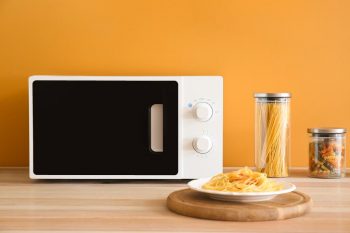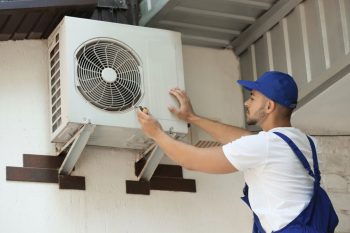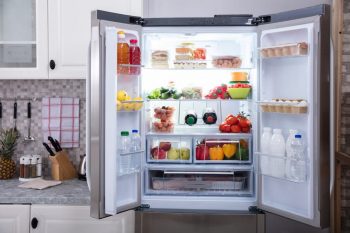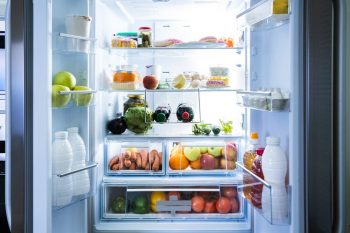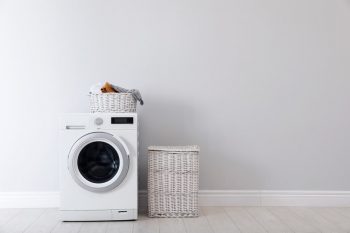
Microwaves have revolutionized our way of cooking and heating food, but they do come with their quirks. One of these is the potential for food to explode in the microwave. It’s a messy and frustrating problem that many of us have experienced. But why does food explode in the microwave, and more importantly, how can we prevent it? Let’s dive in.
To stop food from exploding in the microwave, use microwave-safe containers, avoid sealed packages, lower the power settings, stir and rotate food during cooking, pierce the skin or natural membrane of certain foods, and cover food with a microwave-safe lid or plastic wrap. Additionally, be sure to follow package instructions and cooking times accurately to prevent overcooking.
Why Does Food Explode in the Microwave?
Microwaves heat food by generating microwave radiation, which penetrates the food and causes water molecules to vibrate, producing heat. This process can cause the food to cook unevenly, trapping steam internally and leading to explosions. Foods with high water content, such as eggs or potatoes, are more prone to exploding in the microwave. When the water expands and turns to steam, it needs a way to escape. If there is no escape route for the steam, the internal pressure rapidly builds until the food explodes. Foods with skin, such as apples, sausages, and skin-on chicken, can also explode since pockets can form between the skin and meat.
Common Types of Food That Explode in the Microwave
Some foods are more prone to exploding in the microwave than others. These include:
- Potatoes (unless you poke holes before cooking)
- Shelled eggs
- Tomatoes and tomato sauce
- Citrus fruits
- Hot dogs
- Spaghetti squash
- Eggplant
- Whole grapes
- Carrots
- Green beans
How To Prevent Food From Exploding in the Microwave
Preventing food explosions in the microwave comes down to a few key strategies:
Use appropriate containers: Use microwave-safe containers such as glass, ceramic dishes with vented lids, or microwave-safe plastic containers.
Avoid sealed containers: Don’t use sealed packages or containers, as steam buildup can cause explosions. Pierce the packaging or leave a small opening in the container to let steam escape.
Lower power settings: Using a lower power setting for longer periods of time can prevent food from exploding due to uneven cooking. For example, you can set the power level to 60% (or P6) for most foods.
Stir and rotate food: As microwaves often cook food unevenly, stir your food during the cooking process and rotate the container to promote even cooking and reduce the risk of explosions.
Pay attention to cooking times: Overcooked food is more likely to explode. Always read and follow the package instructions and cook times for your specific type of food.
Pierce the skin or natural membrane: Create a way for the steam to escape by piercing the skin or natural membrane encasing the food.
Cover food with a microwave-safe lid or plastic wrap: This will help cook the food evenly and thoroughly while allowing steam to escape.
Stop and stir: For liquids and semisolids, stop and stir every few seconds to neutralize the pockets before the pressure gets too high.
How To Safely Handle and Clean Up After a Food Explosion in the Microwave
If a food explosion does occur in your microwave, it’s important to know how to safely handle and clean up the mess:
- Turn off the microwave and unplug it to prevent any electrical hazards.
- Allow the microwave to cool down for a few minutes before opening the door.
- Wear gloves or use a cloth to protect your hands from hot surfaces.
- Remove any large food debris using a spatula or a plastic scraper.
- Fill a microwave-safe bowl with 2 cups of water and 2 tablespoons of vinegar. Heat it on high for 5 minutes.
- Leave the door closed for an additional 2-3 minutes to allow the steam to work on the food residue.
- Carefully remove the bowl and the microwave’s turntable, if applicable. Wash the turntable in the sink with warm soapy water.
- Wipe down the inside of the microwave with a damp sponge or cloth, removing all food particles and stains.
- Clean the microwave’s exterior with a damp cloth and mild detergent, if necessary.
- Dry all surfaces with a clean, dry cloth before plugging the microwave back in and using it again.
By following these tips, you can minimize the risk of food exploding in your microwave and keep your appliance clean and safe to use.
Frequently Asked Questions
Can all types of plastic containers be used in the microwave?
No, not all types of plastic containers are safe for microwave use. Only use plastic containers that are clearly labeled as “microwave safe.” Other plastics can warp, melt, or release harmful chemicals when heated.
Is it safe to use aluminum foil in the microwave?
No, it is not safe to use aluminum foil in the microwave. Metals can cause sparks and potentially start a fire. Always use microwave-safe containers and materials.
Why is it necessary to rotate the food in the microwave?
Rotating the food in the microwave helps to ensure that it cooks evenly. Microwaves often heat food unevenly, which means that some parts of the food might cook faster than others. By rotating the food, you help to distribute the heat more evenly and reduce the risk of food explosions.
What does it mean when a container is “microwave-safe”?
A “microwave-safe” container is designed to withstand microwave heat levels without melting, warping, or releasing harmful chemicals. These containers are tested to ensure they can safely be used in the microwave. Always look for a “microwave-safe” label on your containers before using them in the microwave.
Why do microwaves often cook food unevenly?
Microwaves cook food by generating microwave radiation, which causes water molecules in the food to vibrate and produce heat. However, these microwaves don’t always penetrate the food evenly, which can lead to some parts of the food heating faster than others. This is why it’s important to stir and rotate food while cooking in the microwave.


